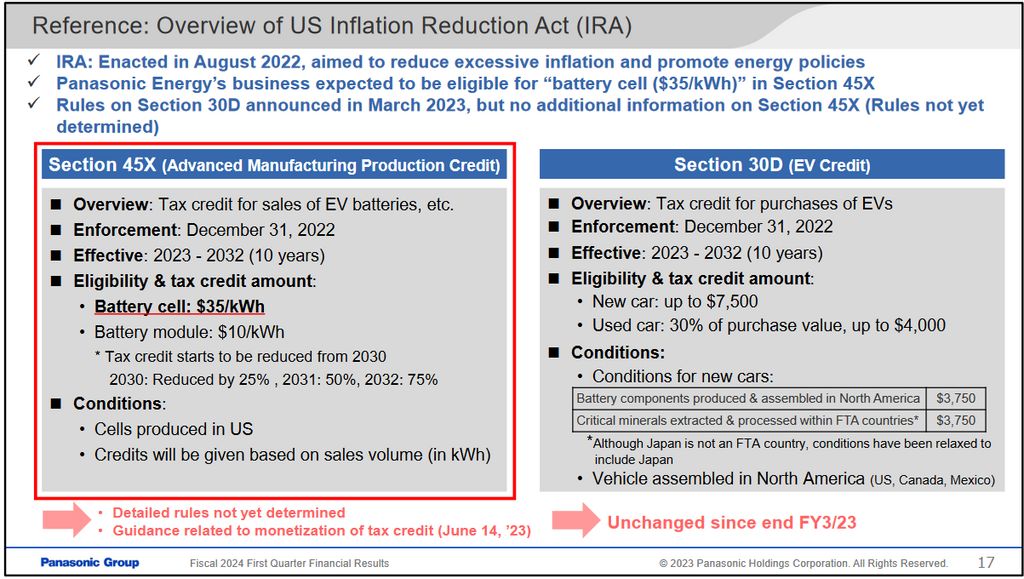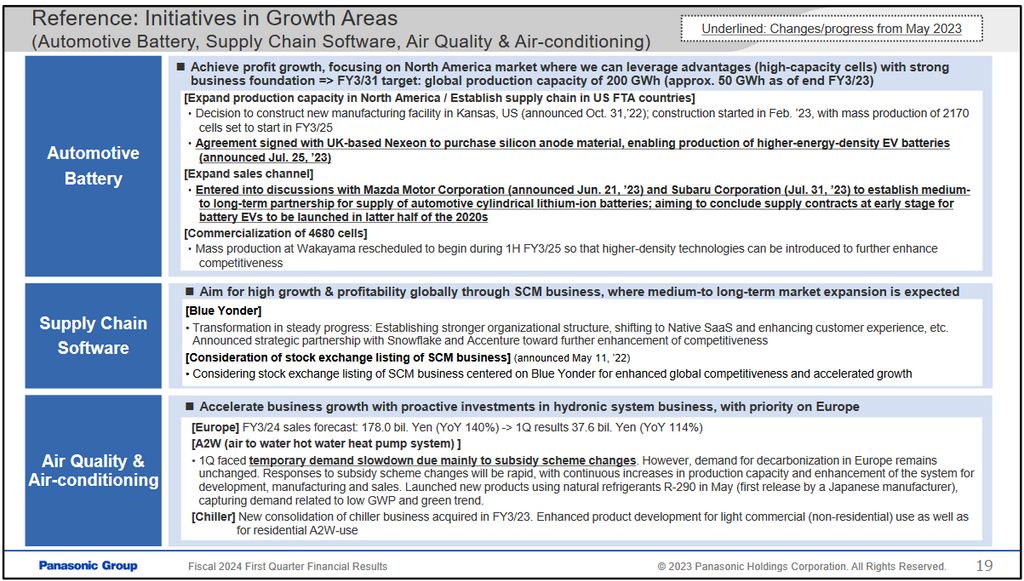Panasonic revealed today that it had to reduce EV battery production at some of its plants in Japan to normalize inventories.
According to Reuters and Panasonic’s third-quarter report, the production of automotive batteries in Japan was reduced by 60 percent compared to the second quarter of 2023.
That’s a significant step back. It seems that the main reason behind this is the slower production and sales of the Tesla Model S and Tesla Model X cars, which are equipped with Panasonic’s 1865-type cylindrical battery cells, imported from Japan. In Q3, Model S/Model X production decreased by 31 percent year-over-year to 13,688. Sales also were down in Q3 (15,985 – down 14 percent), as well as in the Q1-Q3 period (45,905 – down 7 percent).
The good news is that the slowdown does not concern Panasonic’s North American battery factories – the Gigafactory in Nevada, operated in partnership with Tesla, which produces the 2170-type cylindrical battery cells used in Model 3/Model Y and other products.
Nonetheless, Panasonic reduced its energy division’s annual profit forecast by 15 percent to $769 million (115 billion yen). Panasonic’s Group CFO Hirokazu Umeda explained: “We were working to optimize inventories while closing lines, rather than completely shutting down (operations),”
The main focus of Panasonic’s battery division is batteries for electric vehicles in North America. The company noted in its Q3 report the growth of demand for battery cells made in North America with tax credits for EVs purchased in the U.S. “our key market.”
The Inflation Reduction Act of 2022 (IRA) has brought significant incentives to produce batteries locally in the U.S. ($35 per kWh of battery cell plus $10 per kWh of battery modules). Additionally, EVs must also be produced locally to qualify for the federal tax credit:
With a 50-100-kilowatt-hour battery pack, a manufacturer might get respectively $1,750-$3,500 just for the cells (plus $500-$1,000 for modules).
In effect, Panasonic not only is expanding (slightly) its manufacturing capacity at the Tesla Gigafactory in Nevada but also building a new 30-GWh battery plant in Kansas. Both of those sites are assigned to 2170-type battery cells.
In the longer term, Panasonic intends to expand its EV battery manufacturing capacity to around 200 GWh per year, which will include new plants/production lines for 4680-type cylindrical cells.
In the recent months, Panasonic has entered into talks with Mazda and Subaru about cylindrical battery cells for their next-generation electric vehicles. A potential agreement with new carmakers would bring valuable diversification for Panasonic, which is heavily reliant on Tesla, as a dominant EV battery customer.




